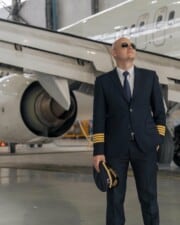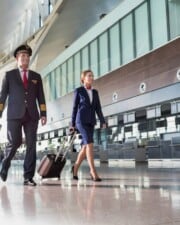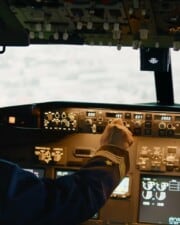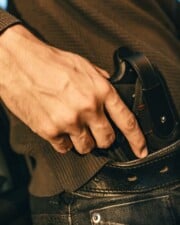Billions of people around the world enjoy an occasional tipple of alcohol at the end of a long day (although, hopefully, most are not drinking on the job). However, for some professions, rules concerning alcohol consumption apply even off the clock. Pilots fall under that category, but the rules regarding drinking are not what you think.
To sum it up, pilots can drink alcohol but never on the clock and not within a certain timeframe of flying. Flying is a dangerous business, and the FAA bans any substances that could impede a pilot’s control of the aircraft. All international agencies have strict rules regarding when pilots can drink alcohol.
So, when can a pilot drink alcohol, and what is the legal alcohol limit for pilots? Here is everything you need to know.
Can Pilots Drink Alcohol?
For the most part, pilots can drink alcohol when they are not working. Pilots are humans, too, and need to relax, unwind, and socialize. Since alcohol is a legal substance in most of the world, including the United States, agencies and aviation companies do not prohibit employees from drinking in their free time.
However, pilots cannot drink alcohol at all while flying. Just as drinking and driving is dangerous, so is drinking and flying. Alcohol impairs judgment, reaction time, and overall, the ability to function. Even a slightly tipsy pilot could cause a serious accident, particularly if that person is flying a commercial jet with hundreds of passengers.
What Is the Legal Alcohol Limit for Pilots?
According to FAA rules, pilots are not allowed to have more than 0.04 breath alcohol concentration. However, if any member of the crew responsible for aircraft safety registers between 0.02 and 0.039 on an alcohol test, supervisors will probably temporarily remove that person from performing their duties.
The agency enforces these rules through regular, random drug and alcohol tests. The FAA and TSA will also test pilots and crew members that are acting suspiciously or after an accident occurs to eliminate substance issues as a possible cause.
How Long Is a Pilot Not Allowed to Drink Before Flying?
The official FAA rule is that pilots don’t drink alcohol at all eight hours “from bottle to throttle.” That means that pilots should have their last drink eight hours before sitting in the cockpit.
However, experts recommend letting at least 24 hours pass between drinking and flying, particularly if a pilot is drinking to get drunk. Hangovers can be just as dangerous during flying as intoxication due to impaired concentration and functioning. While some people think they can “sober up” faster by drinking black coffee or taking cold showers, that is not the case.
Another reason the FAA and experts recommend waiting longer than eight hours before flying after drinking alcohol is that everyone’s body metabolizes alcohol at a different speed. Some people will have a BAC higher than 0.04% even after not touching alcohol for eight hours. To stay on the safe side, don’t drink before flights.
Do Commercial Pilots Have Different Rules?
While the FAA rules are no alcohol during or eight hours before flights, commercial pilots have to adhere to stricter guidelines depending on their airline. The rules for commercial pilots regarding conduct tend to be stricter than for pilots of small passenger planes because the reputation of the airline is at stake and because these pilots are responsible for hundreds of lives.
Many airlines have longer limits regarding when pilots are allowed to drink, with some extending the no-drinking ban for as long as 12 or 24 hours.
What Happens When Pilots Are Caught Drinking?
Although the rules around drinking alcohol are strict for pilots, that doesn’t mean people haven’t tried to get around them or break them. However, for those who want to keep flying, it is recommended to follow these rules strictly.
Pilots who are caught drinking while flying or piloting a plane will permanently lose their licenses. There are many ways to get caught drinking, and no drunk is as sneaky as they think they really are. Random alcohol tests are common, particularly for commercial pilots. Crew members are also required to report colleagues whom they think are impaired (although many do not out of solidarity with coworkers).
The rules are less strict for pilots who recognize they have a problem with substance abuse and do not let it get in the way of their work. Right now, the FAA allows pilots to get their license back after seeking treatment for alcohol abuse. This includes Class I, Class II, and Class III licenses.
However, recovering alcoholics must follow a strict inpatient program lasting several weeks, undergo a monitoring period for several months, and continue attending support sessions for years after getting their licenses back. The goal is to keep passengers safe.
Related Posts













